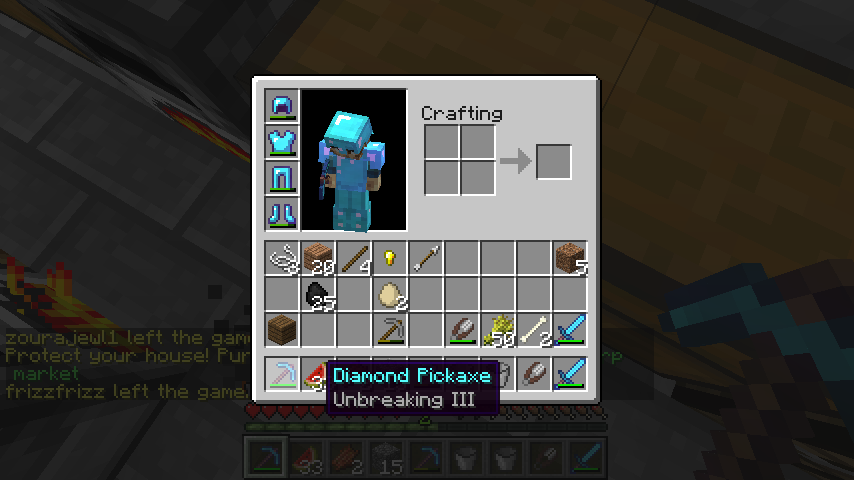This section allows you to view all posts made by this member. Note that you can only see posts made in areas you currently have access to.
Topics - Wyboth
1
« on: August 14, 2013, 11:22:21 pm »
Hello again Opticraft, for the last time. For those of you who knew me, you've probably noticed I haven't been online in a couple of months, even though I said I would have more free time to play Minecraft. To make a long story short, I've moved on. Over the past year and a half, I played the crap out of Minecraft. I did just about everything there is to do. Because of that, though, the game can no longer hold my attention for more than a few minutes. I find myself bored whenever I log on. My activity here really began to wane at the end of May, when I rediscovered reddit. That's where most of my time was spent over the summer. But the real kicker was a couple of weeks ago when I discovered Kerbal Space Program. I can now say with certainty that almost 100% of my free time will be spent playing this game, as it has held my attention for every second of the past few weeks. If I ever do come back to Minecraft, it won't be for a long, long time. So, this is goodbye. Thanks to every one of you; you have all been great friends and have shaped my life in ways you can't imagine. I know these leave threads get locked right after they're posted, so PM me if you have anything to say. I'll try to check my Opticraft inbox for the next week or so to reply to your messages. I'm on reddit almost daily, so pop over to reddit and send me a message there if you want to reach me any time in the future. Thanks again, it's been fun. Goodbye.
2
« on: May 27, 2013, 09:13:16 pm »
Hello, Opticraft Staff. A little less than a week ago, I made a written book containing the full text of a creepypasta. I started an auction for it, and it was doing well. However, today I logged in, and found that the text and title of the book were gone. I was frustrated when I saw this, because all of my work was gone, and I wasn't going to make money from selling it. The book was in my inventory when I logged off a week ago and was still in my inventory when I came back. The text that appears when my mouse hovers over the book is "Written Book". The pages are blank. That is all of the information I have about this glitch. I believe that it is server wide. The only recommendation I have is to look into the code for written books; I can't get any more specific than that. If anyone else has experienced this problem, please reply with your incident as well. Please look into this issue, it is very frustrating when it happens.
3
« on: May 21, 2013, 04:40:42 am »
Item: Written book containing the full text of the "A Knock on the Window" creepypasta written by DeadGoomba. Enchantments: None Condition: Not Applicable Level Enchanted On: Not enchanted Starting Price: 2.5K Buyout Price: 10K End of Auction: 05/28/2013 11:59 PMNotes: I had to type every word of this book by hand, since copy-pasting mechanics in books are very strange. I also went through the creepypasta and corrected grammar and spelling errors for maximum reading pleasure.
4
« on: May 14, 2013, 02:07:30 am »
Hello, everyone! I know it's been a while since I've been on Opticraft, but I've just finished the last of my school work, so I should be able to get back on! Also, today is my birthday, so feel free to wish me a happy birthday if you want to!
5
« on: April 27, 2013, 12:23:09 am »
Hello, Opticraft. As you may or may not have noticed, I have been inactive for the past few weeks. I am currently tied up in school work, and will be until ~May 20th. Until then, I will rarely be on Opticraft. I am not leaving, I am just being inactive. Thank you for reading, and I'll see all of you in a month.
6
« on: April 05, 2013, 10:47:26 am »
I just recently got promoted to builder, and noticed that I can no longer lock or remove my own topics. I was able to do this as a guest/recruit, but I can't anymore. I think builders, and all members for that matter, should have the ability to lock or remove their own topics. I see no reason why they shouldn't, but if you do, leave a comment and explain why.
7
« on: April 05, 2013, 12:18:52 am »
Ingame name: Wyboth Join date: Apr 24 2011 Briefly describe all your creations: Wooden bridge, lighthouse, Sora x Roxas sprite, Mockingjay Pin Sprite, Touya Sprite, Touko Sprite, Shoop da Whoop sprite, Dragonite sprite, Ho-oh sprite, Mew sprite, lamppost, hourglass What worlds are the creations on: Recruit and member worlds, SoulKnightGT Links to screenshots of the creation: http://s1258.photobucket.com/user/Wyboth/library/?page=1Names of players who helped contribute: Wyboth What is your current rank in Opticraft ?: Recruit Extra (Anything else you want to mention): Do you agree with our terms( http://www.opticraft.net/index.php?topic=3.0) ?: Yes
8
« on: April 02, 2013, 12:27:58 am »
Age: 15
Location: Memphis, TN
Timezone: GMT -6
Join Date: ~October 2012
Were you recommended by anyone?: No
Why you should become a moderator: I am a mature member of the community, and I believe that I could contribute more if I were a moderator. I always enjoy helping others, and I am very responsible. If I were a moderator, I would use my powers only when necessary. I truly enjoy playing on Opticraft, and I would like others to share my enthusiasm. I will do my part to help make playing on this server as enjoyable as possible. Please consider me for the position of moderator.
9
« on: March 29, 2013, 09:41:48 pm »
Recently, I found three old screenshots of Opticraft on my old computer. I don't know why I had them, but they were really old. I thought you guys might want to see them. Here is the link to an imgur album of them. Yes, this is Opticraft. It used to have a different SMF theme that changed ~2011. It's really neat seeing how such a tiny community grew into one of the most successful Minecraft communities of all time. Cheers, Wyboth
10
« on: March 25, 2013, 02:18:39 am »
Fluid Dynamics By Wyboth IntroductionWater is essential to our lives. We drink it, we bathe in it, and we use it for travel. In the past centuries, great physicists have discovered the equations which water and other fluids behave by, paving the way for countless inventions we couldn't imagine living without. In Minecraft, water does not play as large of a role as it does in the real world, but it certainly cannot be overlooked. As always, the purpose of this and future experiments will be to discover just how similar Minecraft is to our own world, and today I will focus on water. In Minecraft, water is a means of fast travel (boats) and a makeshift conveyor belt (flowing water & channels). This article will focus on these two things. Firstly, I will determine the maximum velocity of a boat. Then, I will find the velocity of a player in flowing water. Materials and MethodsThe first experiment will determine the maximum velocity of a boat. One may think that this would involve going maximum speed in a straight line and comparing coordinates 1 second apart, but it is not that simple. A good metaphor for going maximum speed in a boat is driving in a car with cruise control on. The speed is constant, so the only thing that you can change is the direction you are traveling by steering. Say you turn the steering wheel about 45° clockwise and hold it there. The car would then turn clockwise in a circle until it ran out of gas or you changed the orientation of the steering wheel. You can do the same with a boat, but you would use the direction the player is facing instead of a steering wheel. How "hard" a turn is is determined by how large of an angle there is between the bow of the boat and the direction the player is facing. Here's the problem. A player can never be perfectly lined up with the bow of the boat. Even if the angle is 0.01°, the boat will still move in a circle, albeit a large one. Because of this, boats can never truly travel in a perfectly straight line, so I cannot measure a boat's velocity as if it were doing such. Because the boat's velocity is not linear but circular, I must use the laws of Centripetal Motion to determine the velocity. This is most easily done by constructing a sine equation of the boat's motion. To do this, I must first gather data of a boat traveling in a circle. For this experiment, I will create a superflat world filled with water, travel to the origin, and set down a boat. I will enter it and position my player so that he is looking about 15° to the right of the bow. I will then turn on F3 options and accelerate to full speed. When I am at full speed and traveling in a circle, I will record my gameplay with FRAPS. I will continue this until I had made one complete revolution. I will then perform frame analysis with VirtualDub to get my coordinates for each second. For the sine wave, it does not matter if I choose the x coordinate or the z coordinate. I will choose the z coordinate. The x-axis of the graph is time, and the y-axis is the z coordinate. Here is the graph.  Note that this is the raw data; no model sine wave has been constructed yet. The first step is to plot a standard sine wave (y = sin(x)) with the data. From there, I will apply tweaks to it until it matches the data.  Obviously, the two are completely different. The first step is to find the amplitude of the wave. The amplitude is the "height" of the wave, or the distance from the middle of the wave to the crest or trough. The wave's crest is 10.08194, and the wave's trough is -150.18664 m. The formula for amplitude is this: a = (c - t) / 2 A is amplitude, c is the crest, and t is the trough. I will substitute the known values into the equation. a = ((10.08194) - (-150.18664)) / 2 a = (160.26858) / 2 a = 80.13429 The amplitude needs to be multiplied to the front of the equation. Thus, the equation becomes: y = 80.13429 * sin(x). This is the new graph.  The next step is to apply a vertical translation so that the two sine wave's centers are aligned. The equation for vertical translation is this: v t = c - a V t is the vertical translation, c is the crest, and a is the amplitude. I will substitute the known values. v t = 10.08194 - 80.13429 v t = -70.05235 The vertical translation is added to the end of the sine equation. Note that I am adding a negative, so it will be subtracted instead. The new equation is: y = 80.13429 * sin(x) - 70.05235. Here is the graph.  The crests and troughs of the two waves can now be seen to have the same y values. The next step is to change the period of the graph. The period is the time it takes for one complete revolution. This is usually the time from crest to crest or trough to trough. However, since there is only one crest and one trough, I cannot find the period in this way. However, I do know that the distance from crest to trough is half of the distance from crest to crest, and I do have a crest and a trough, so I can find the period using this formula: t = 1 / ((2 * (c x - t x)) / (2 * pi)) The trough occurs at an x value of 21.067 seconds. The crest occurs at an x value of 57.033 seconds. I will substitute the known values. t = 1 / ((2 * (57.033 - 21.067)) / (2 * pi)) t = 1 / ((2 * (35.967)) / (2 * pi)) t = 1 / ((1079/15) / (2 * pi)) t = 1 / 11.4485455730770044969 t = 0.0873473397661666330553159511 The period is multiplied by x in the sine equation, changing the equation to: y = 80.13429 * sin( 0.0873473397661666330553159511 * x) - 70.05235. This is the new graph.  Only one step remains: the phase shift. Once this is applied, the two will overlap, and the equation will be complete. Here is the formula for phase shift: p s = t * (c xd - c xs) P s is phase shift, c xd is the data's crest's x-coordinate, and c xs is the sine wave's crest's x-coordinate. I will substitute the known values. p s = 0.0873473397661666330553159511 * (57.033 - 17.9833) p s = 0.0873473397661666330553159511 * 39.0497 This number is actually irrational, with the 9 repeating infinitely. To represent the phase shift accurately, it must be written in rational form. p s = 0.0873473397661666330553159511 * (781 / 20) p s = 3.410913617868807020810087890455 This number, although positive, must actually be subtracted from x to function properly. The final equation is this: y = 80.13429 * sin( 0.0873473397661666330553159511 * x - 3.410913617868807020810087890455) - 70.05235. Here is the graph.  As you can see, the two perfectly overlap each other. The equation is correct. Now, I will find the velocity based on the properties I found earlier while creating the sine wave. This is the equation for tangential velocity: v = (2 * pi * r) / tIt should be noted that the period of the boat and the period of the sine wave are not the same. A normal sine wave has a period of 2 * pi, so to find the true period of the boat, I must use this equation: t = (2 * pi) / p P is the sine wave's period. I will substitute values. t = 6.2831853071795865 / 0.0873473397661666330553159511 t = 1079/15 s It should also be noted that the radius of the circle is equal to the amplitude of the sine wave. With all of these values substituted into the equation, it becomes: v = (6.2831853071795865 * 80.13429 m) / (1079/15 s) v = 503.498593529268066671085 m / (1079/15 s) v = 6.999517055550529193759291 m/s -> 7 m/s The next experiment will determine the velocity of a player in flowing water. This will be accomplished by making a small channel of flowing water, walking to one end and holding W to keep myself in place, turning on F3 options, and then recording with FRAPS when I release W. I will then perform frame analysis with VirtualDub to determine the displacement, and use physics formulas to find the velocity. Here is the experimental setup.  At one point close to the end of the channel, the player's z coordinate is -1010.37. 1/30 th of a second later, his z coordinate is -1010.44. This means that the player traveled 0.07 m in 1/30 seconds, or 2.1 m/s. ResultsA boat's maximum velocity is 7 m/s, and a player travels at 2.1 m/s in flowing water. DiscussionFirstly, I will cover sources of error. The only source of error is inexact frame display, and it only affects the boat experiment. This means that the Minecraft frame didn't update exactly when the boat would have reached the crest or trough, so the number is slightly off. This is why the velocity didn't show up to be exactly 7. However, as you can see, the error caused by it was very small (6.9 * 10 -3% to be exact). I beamed when I discovered that boats travel at 7 m/s, because it meant that my five hours of frequently interrupted work had paid off. Unlike most results in Minecraft Science, this number is a perfect whole number, which told me that I had done it correctly for sure. This knowledge could be applied for people traveling over water, such as those using AMIDST to find a mushroom island, so that they could know how long their trip would be. This could also be useful to mapmakers, so they would know just about how long it would take for a player to traverse their water level on a boat. The flowing water velocity would be useful to auto-farm designers, as they could calculate how long it would be before their harvested crop reaches a collection point. As always, if the reader can think of any other implications of this data, he or she should post a comment with his or her idea. Works CitedMinecraft, developed by the Mojang Team Kinematic Equations, Isaac Newton Centripetal Motion Equations, Johannes Kepler Post Scriptum
11
« on: March 03, 2013, 02:21:25 am »
This topic is similar to "What if a staff member was your neighbor?" but not identical. In this topic, you will post about how close you have actually been to another Opticraft player. Real life friends do not count. They must be people whom you met over Opticraft.
I'll start. The closest I've ever been to another Opticraft player was 50 miles. Kodak28 was heading towards New Orleans for some trip, and she stayed the night in Memphis. She didn't know exactly where in Memphis she was, though, so the farthest she could have been was 50 miles. Pretty neat.
Your turn.
12
« on: March 02, 2013, 05:14:02 am »
This topic is to see if Top Server websites are actually effective at recruiting members to Opticraft. If you learned about Opticraft from XtremeTop100.com, MinecraftServers.net, gtop100.com, or Minestatus.net, vote yes. If not, vote no.
13
« on: February 23, 2013, 07:02:20 am »
TNT Kinematics By Wyboth AbstractThe purposes of this experiment are to determine the velocity a player travels at after being blasted by TNT and to determine the muzzle velocity of a TNT cannon. IntroductionThe world of Minecraft is an intriguing place. Designed to emulate real life to an extent, it has captured the minds of many people. The purpose of this and future experiments will be to discover just how similar Minecraft is to our own world. This paper focuses on an unlikely subject: TNT. In our world, TNT is used in military bombs and as an industrial blasting agent. In Minecraft, TNT is used almost identically. This experiment will seek to answer just how similar TNT is in Minecraft as compared to TNT in the real world. As Adam Savage says, "Let's blow some stuff up." Materials and MethodsThe first experiment I will do will determine the velocity of a player when subjected to a TNT blast. I will do this by standing on top of TNT and setting it off, then recording the maximum height I reached. Here is the video showing the results of the experiment. After a lot of work, I compiled a 3D graph of the player's motion. Here are the views from different angles. 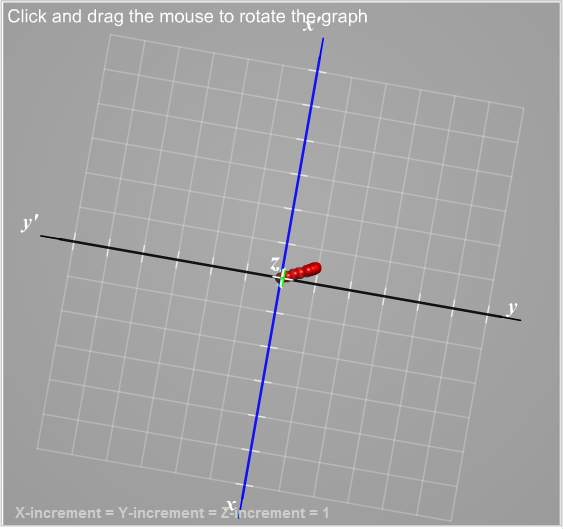 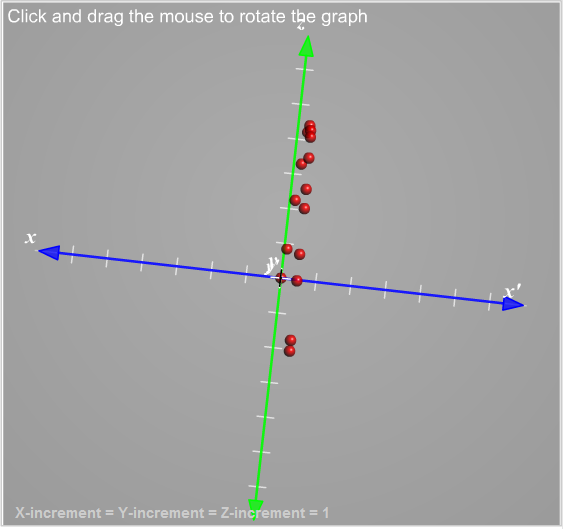 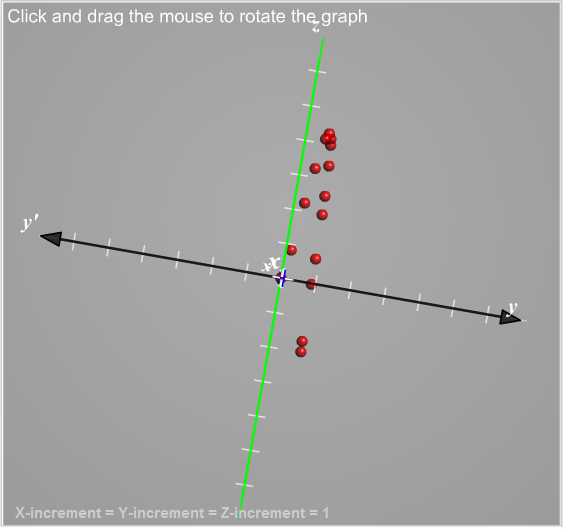 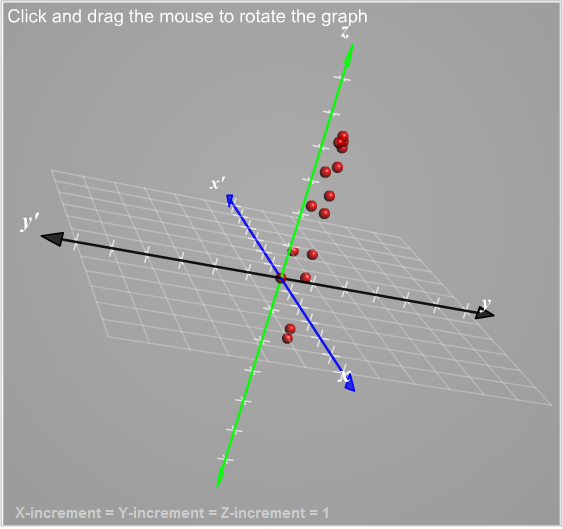 To determine the initial velocity, I first had to find the distance the player traveled immediately after the TNT exploded. Let us say for now that the player's original position was (0, 0, 0). One frame after the TNT exploded, the player was at (-0.07414, 0.841, 0.14788). To find the total displacement, I will use the Pythagorean theorem. r 2 = x 2 + y 2r 2 = (-0.07414) 2 + (0.841) 2r 2 = 0.0054967396 + 0.707281 r 2 = 0.7127777396 r = √0.7127777396 r = 0.8442616535174389 This is only one piece of the problem. I have found the distance the player traveled across the x and y axes, but I have yet to include the distance the player traveled across the z axis. I must use the Pythagorean theorem again to find the total distance that the player traveled. d 2 = r 2 + z 2d 2 = (0.8442616535174389) 2 + (0.14788) 2d 2 = 0.7127777396 + 0.0218684944 d 2 = 0.734646234 d = √0.734646234 d = 0.8571150646208477 This is the total distance that the player traveled. For convenience, I can round this number off to 0.86 m. Now, to find the velocity, I must multiply this number by 30, since my recording software captures 30 frames per second. This gives us a velocity of 25.8 m/s. Now, we must use this equation to calculate the acceleration: v f = v o + 2ad The known variables are v f = 25.8 m/s, v o = 0 m/s, and d = 0.86 m. I will substitute these variables into the equation, and drop units for the moment. 25.8 = 0 + 2*0.86*a 25.8 = 1.72a a = 15 m/s 2This means that the player accelerated at 15 m/s 2 because of the explosion. Now, to compare this to the real world, I will have to make the assumption that the player's mass is similar to that of on average human's. F = ma F = (65 kg)(15 m/s) F = 975 N Once again, this is assuming that humans in Minecraft have about as much mass as humans do on Earth. If this is true, then the TNT exerted 975 N on the player. Explosions in real life are measured by how much energy they give off in Joules, so I will use the work equation to find the work that the TNT did on the human. W = F*d W = 975 N * 0.86 m W = 838.5 J TNT stands for Trinitrotoluene, a compound that looks like this:  Because the substance is called TNT in Minecraft, and TNT in real life stands for this exact compound, I am going to assume that the two are the same, and that the block TNT is one cubic meter of Trinitrotoluene. With that being said, Trinitrotoluene has an average density of 1.654 g/cm 3. I will convert this to 1,654 kg/m 3. Because the block TNT is one cubic meter, the mass of a TNT block is 1,654 kg. This may seem shocking, but remember that we are talking about one cubic meter of TNT, or this much. 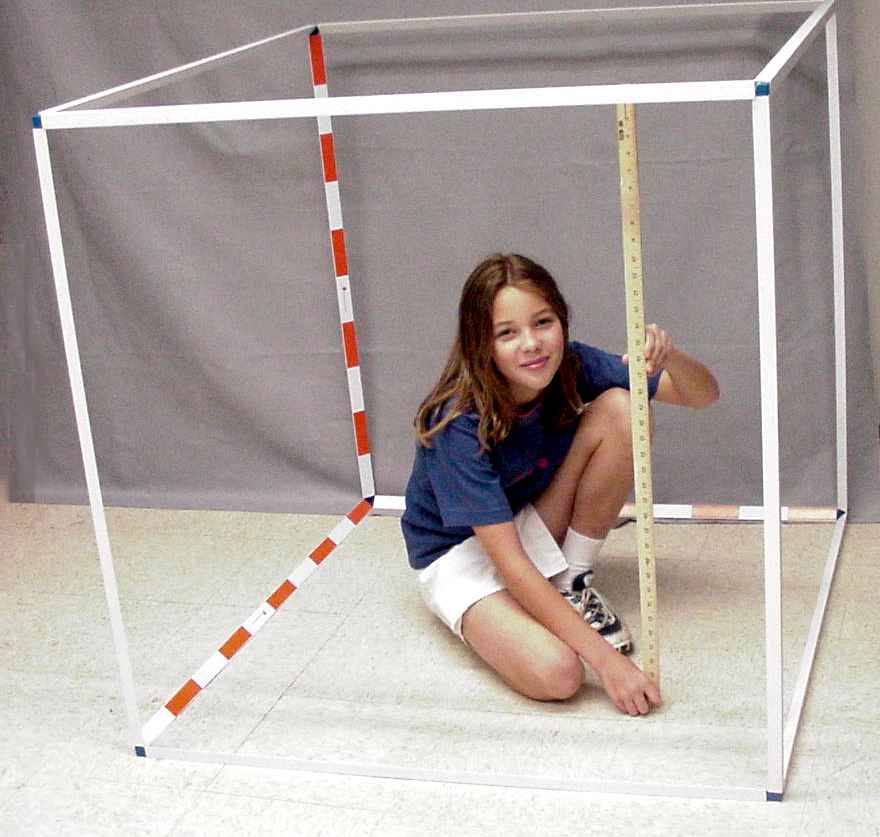 To compare, the average mass of a cubic meter of real-life sandstone is 1,700 kg. Now, for the comparison to real life. One ton of TNT in real life releases 4.184 * 10 9 Joules. Doing some conversions, 1 kilogram of TNT releases 4.612 * 10 6 Joules. Finally, 1,654 kg of TNT release 7.628 * 10 9 Joules. This means that TNT in real life is 9,097,630 times stronger than Minecraft TNT! My next experiment will determine the muzzle velocity of a TNT cannon. This is, simply put, how fast the TNT will fly after being shot from the cannon. Here is a video demonstrating the TNT cannon. To determine the muzzle velocity, I will record the cannon being shot, then use frame analysis to determine the velocity and angle of the TNT. Here are the two frames. 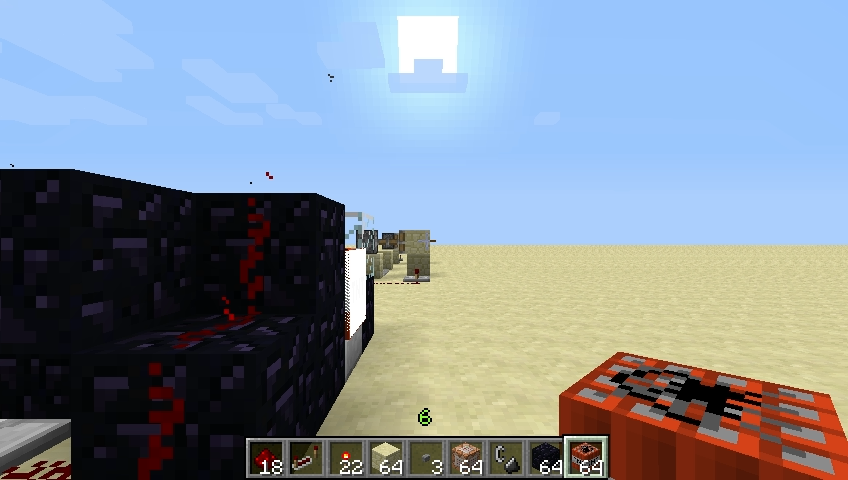 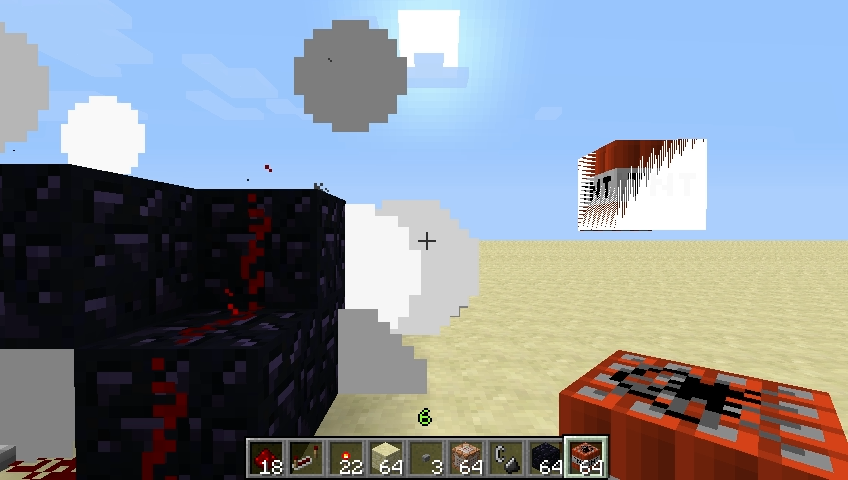 In the first image, the top left corner closest to the camera has an xy pixel value of (345, 248). In the second picture, the corner has a pixel value of (706, 139). This means that the TNT traveled 361 pixels right and 109 pixels up between the frames. If we construct a right triangle of these lengths, the hypotenuse would be 377. Thus, the sine of the angle would be 109/377, or 0.289. Using arcsine, the angle becomes 16.81°. I can find the velocity using this very complicated equation:  In this equation, d is the horizontal distance traveled, v is the original velocity, Ɵ is the angle, g is the acceleration due to gravity, and y o is the initial height of the object. I know already that d is 54 m, Ɵ is 16.81°, g is 14.4622 m/s 2, and y o is 1 m. This leaves only v to be solved for. 54 = (0.958v / 14.4622)(0.289v + √(0.083521v 2 + 2 * 14.4622 * 1)) 54 = (0.066241v)(0.289v + √(0.083521v 2 + 28.9244)) 54 = 0.01914v 2 + 0.066241v√(0.083521v 2 + 28.9244) 54 = 0.01914v 2 + 0.066241v(0.083521v + 5.378) 54 = 0.01814v 2 + 0.0055v 2 + 0.356244v 54 = 0.02364v 2 + 0.356244v v = 40.8497 m/s This means that the TNT cannon fired the TNT with a velocity of 40.8497 m/s. I can even go on from here to find the maximum height using this equation: h = (v 2 * sin 2(Ɵ)) / (2 * g) h = (1668.69799 * 0.083521) / (2 * 14.4622) h = 139.371 / 28.9844 h = 4.818 m Since the TNT was launched from an initial height of 1m, I will add 1 to the height to get the height from the ground. h = 5.818 m ResultsThe TNT made the player accelerate at 15 m/s 2, which gives a force of 975 N, which is puny compared to the same amount of TNT in real life, which is 9 million times stronger! The muzzle velocity of a TNT cannon is 40.8497 m/s, and the TNT reaches a height of 5.818 m from the ground. DiscussionFirstly, I will cover sources of error. There are two: inexact frame capture and orthographic projection. Inexact frame capture may have occurred if my recording software did not snap a frame at the exact moment the TNT exploded, which is likely. However, the error from this is very minor. The other source of error is orthographic projection, which may have skewed my angle measure. Because Minecraft is a 3D world represented on a 2D screen, it is impossible to get around viewing things from a slight angle. Because of this, it may have appeared that the TNT from the cannon traveled a shorter distance than it actually did. However, there is no way to tell the true distance that it traveled, and the error that it may have caused would also be relatively minor. Next, I will discuss the implications of the results. Although I cannot draw conclusions from the force of the TNT because it is based on an assumption, I can still visualize what an entire cubic meter of TNT exploding in real life would be like, and the blast radius certainly seems to be larger than a few meters, as it is in Minecraft. Either TNT in Minecraft is a different compound, or there is something inhibiting its power. Also, the muzzle velocity of a TNT cannon will certainly be useful for building things such as adventure maps, so that mapmakers can now accurately position the cannons to fire where needed. As always, if the reader can think of any other implications there data might have, he or she should post a comment with their idea. Works CitedMinecraft, developed by the Mojang Team Theorem for Sides of a Right Triangle, Pythagoras Newton's Second Law of Motion Equation for Work, James Prescott Joule TNT information, The New World Encyclopedia
14
« on: February 09, 2013, 07:56:55 pm »
Item: Diamond Pickaxe Enchantment(s): Unbreaking III Condition: Gently Used Level Enchanted On: 30 Starting Price: 3K Price Increase: 1K Buyout Price: 10K End Of Auction: 3/06/2013 12:00 AM GMT -6 Notes: If you win the auction, you may come to /home Wyboth to pay and receive the pickaxe.
15
« on: February 09, 2013, 04:26:40 am »
Minecart Kinematics By Wyboth AbstractThe purpose of this experiment is to explore the physics surrounding minecarts. I did experiments to test if collisions are elastic or inelastic, to test if momentum is conserved in collisions, and to determine the coefficient of kinetic friction for minecarts. IntroductionOne of the first things students do in physics class is roll carts down tracks to learn about energy and momentum. This experiment will do the same, but with minecarts. To determine how similar or different minecart physics are from real life, I will conduct several experiments with minecarts. I will test to see if collisions are elastic or inelastic, to determine if our current momentum laws are valid in Minecraft, and to determine the coefficient of kinetic friction for minecarts. Materials and MethodsThe first experiment will determine whether minecart collisions are elastic or inelastic. An elastic collision is a collision in which the two objects bounce apart after colliding, like a rubber ball bouncing off of a wall. An inelastic collision is the opposite, the two objects stick together, like play-doh sticking to a wall after colliding. To determine this, I placed a minecart above a sloped track, and a minecart at the bottom of the sloped track. Because occupied minecarts behave differently than unoccupied minecarts, I placed a zombie in each minecart to make them occupied. I recorded the experiment. You may watch the video here. As is evident in the video, the two carts stick together after colliding. This means that the collisions are inelastic. The next experiment will test if our momentum laws are true for Minecraft. In inelastic collisions, momentum (p) is conserved. This means that: p 1 + p 2 = p 3Or the momentum of the carts after they collide is equal to the momentum of the first cart plus the momentum of the second cart before collision. Momentum is defined as mass times velocity. This relationship is shown in the equation for momentum: p = m * v So, the first equation can be rewritten like this: m 1 * v 1 + m 2 * v 2 = m 3 * v 3Now, in Minecraft, it is impossible to measure the mass of an occupied minecart, at least in conventional units. However, it is not necessary to do so. As long as both minecarts have the same mass, it is simply a matter of ratios. I will give each cart a mass of 1 minecart (1mc). To prove if the above equation works, I will perform a similar experiment to the first one, but with myself in the minecart above the slope in order to measure the velocity of the minecart before and after the collision. The other minecart will contain a zombie. Because the minecarts do not contain the same entity, it is questionable if they have the same mass. I tested this by setting up two minecart tracks similar to the track from the first experiment side by side. I put a minecart containing a zombie at the top of the hill and another minecart containing myself at the top of the hill on the other track. I positioned 2 pistons behind the minecarts connected to a button in order that both minecarts are pushed off at exactly the same time with exactly the same velocity. If the two minecarts have the same mass, they will travel along the track at identical speeds. I recorded this experiment. You may watch the video here. As the video shows, the zombie and I traveled at exactly the same velocity down the track. This means that both minecarts had the same mass. Now that I have determined that a minecart with a zombie and a minecart with a human have the same mass, I can conduct the actual experiment. I will determine the minecart's velocity the instant before collision and 1 second after collision by using F3 and frame analysis. The minecart's velocity before impact was 10.308 m/s and the velocity after impact was 4.8741 m/s. I will solve for v 3 in the momentum equation and compare that velocity to the recorded velocity. m 1 * v 1 + m 2 * v 2 = m 3 * v 31 mc * 10.308 m/s + 1 mc * 0 m/s = 2 mc * v 310.308 m/s = 2v 3v 3 = 5.154 m/s 5.154 m/s seems very close to 4.8741 m/s. I will calculate percent error. (abs(4.8741 - 5.154) / 5.154) * 100 = 5.43% A 5.43% error is very reasonable. Because there was a small percent error between the theoretical velocity and the actual velocity, I can conclude that the law of conservation of momentum does apply to minecarts in Minecraft. The final experiment will be to determine the coefficient of kinetic friction between the minecart and the rail. The coefficient of kinetic friction determines the force of friction on the minecart. The force of friction is equal to the coefficient of kinetic friction times the normal force, which is the force exerted by the ground on the minecart. The formula for coefficient of kinetic friction is: µ k = F µ / F nIn this equation, µ k is the coefficient of kinetic friction, F µ is the force of friction, and F n is the normal force. Since F µ and F n are both forces, and since F = m * a, the equation can be rewritten as: µ k = (m * a µ)/(m * a g) In this equation, a µ is the acceleration caused by friction, and a g is the acceleration caused by gravity, and m is the mass. Since mass is divided by mass, they cancel, and leave us: µ k = a µ/a gIn my last paper, Mass of the Minecraft Earth, I determined that the acceleration due to gravity was 14.4622 m/s 2. Thus, the equation now becomes: µ k = a µ/14.4622 m/s 2The only unknown besides µ k is a µ. This can be found by comparing the velocities of a minecart 1 second apart. I chose a part of my video where there was an uninterrupted second of traveling over the flat track. At the point I chose, the minecart had a velocity of 7.2729 m/s. 1 second later, the minecart had a velocity of 7.1271 m/s. This equation can be used to calculate acceleration: v f = v o + a * t In this equation, v f is final velocity, v o is original velocity, a is acceleration, and t is time. I will substitute the known values into the equation. 7.1271 m/s = 7.2729 m/s + a * 1 s 7.1271 m/s = 7.2729 m/s + a a = -0.1458 m/s 2Now that we have a µ, we can substitute this into our equation. µ k = -0.1458 / 14.4622 µ k = -0.010081453721 I would note that µ k is a scalar quantity, so I will drop the negative sign and round to a more reasonable value. µ k = 0.01 This means that to calculate the force of kinetic friction on a minecart, you can use: F µ = 0.01 * F nResultsThe results of these experiments are that occupied minecarts have inelastic collisions, the law of conservation of momentum is true for inelastic collisions between occupied minecarts, and the coefficient of kinetic friction for an occupied minecart is 0.01. DiscussionFirstly, I will cover sources of error. There is only one source, and that is inexact frame capture. Basically, my recording software probably did not capture frames exactly when events occured. You can see the effect of this if the difference between theoretical velocity and actual velocity in the conservation of momentum experiment. This would have affected the conservation of momentum experiment and the coefficient of kinetic friction experiment. This is unavoidable. Now, I will discuss the results. I was surprised to learn that minecarts have inelastic collisions. I was expecting for them to have elastic collisions, as most "carts" do in the real world. If they did have an elastic collision, the cart pushed off the hill would have stopped, and the other cart would have shot off at the same speed that the first cart was going before the collision, just like a Newton's cradle. However, they very clearly stuck together, so the collision was inelastic. I was also excited to find out that conservation of momentum was true for Minecraft. While recording the video, I did not notice the drop in velocity, so I was expecting it to not apply. I was shocked and delighted to discover that the velocity had been halved. There are no conclusions that can be drawn from these results other than those already found. This paper is more of a report of findings than a study to be ruminated on, as my last paper was. However, these findings will be extremely useful for future calculations involving minecarts. Works CitedMinecraft, developed by the Mojang Team Newton's Second Law of Motion Law of Conservation of Momentum, Isaac Newton Equation for Coefficient of Kinetic Friction, Arthur-Jules Morin
|




















